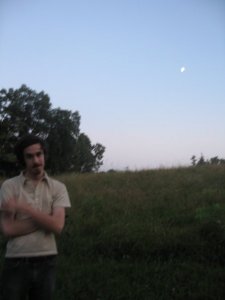 Last night, Drift (a Field) was premiered as part of the New Media Projects Showcase at Lawrence University. I’ve been posting regular status updates on this project on this blog, so I won’t recap the entire gestation process here, only offer some brief notes about the finished work.
Last night, Drift (a Field) was premiered as part of the New Media Projects Showcase at Lawrence University. I’ve been posting regular status updates on this project on this blog, so I won’t recap the entire gestation process here, only offer some brief notes about the finished work. Drift (a Field) uses the programming tool Max/MSP/Jitter to create and explore a matrix or field of video images which are grouped conceptually and compositionally. The Max patch wanders through this field and shows us—the audience—the view of its location in the matrix.
In contrast to the video, the audio is largely fixed, which forces the pseudo-spatial wanderings of the video patch to be folded into the temporal performative boundaries of the sound. As the performer, I can control when the video advances to new images (and can thus create synchronocities between the audio and video), but no control over what those images are. By imposing a fixed aural narrative to contrast the dynamic video, the indeterminate sequence of images can come to be viewed as a form in time itself.
When I first began to formulate ideas about Drift (a Field), I described it as a “meditation on snowblindness”. Though it has evolved and changed over the past 10 weeks of work, I feel that this description is still apt, given the imagery and sounds used in this piece, which reflect the transformative and blinding processes of decontextualization that can take place as technology filters and transmits sounds and images.
The title Drift (a Field) was inspired by the poetry and prose of Upper Michigan writer Ander Monson, whose works similarly deal with issues of space, place, technology, and—not surprisingly—snow.
images [top to bottom]:
3 video captures from Drift (a Field), fixed media sound with interactive video, 2010





